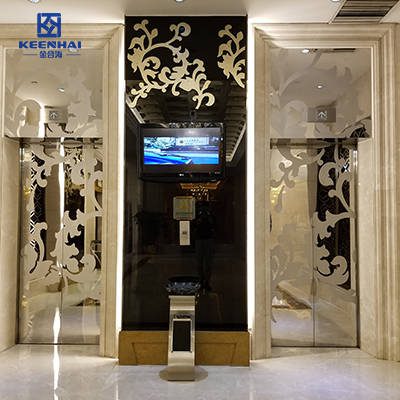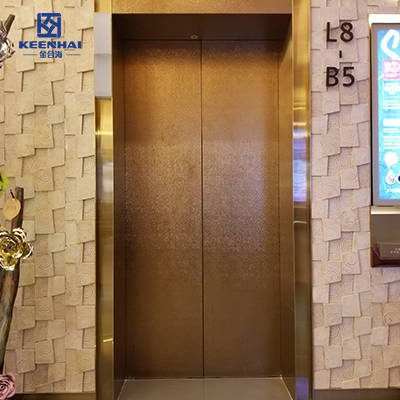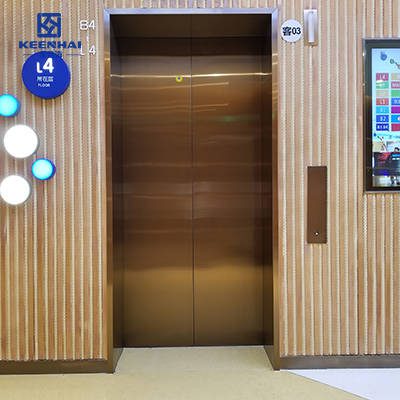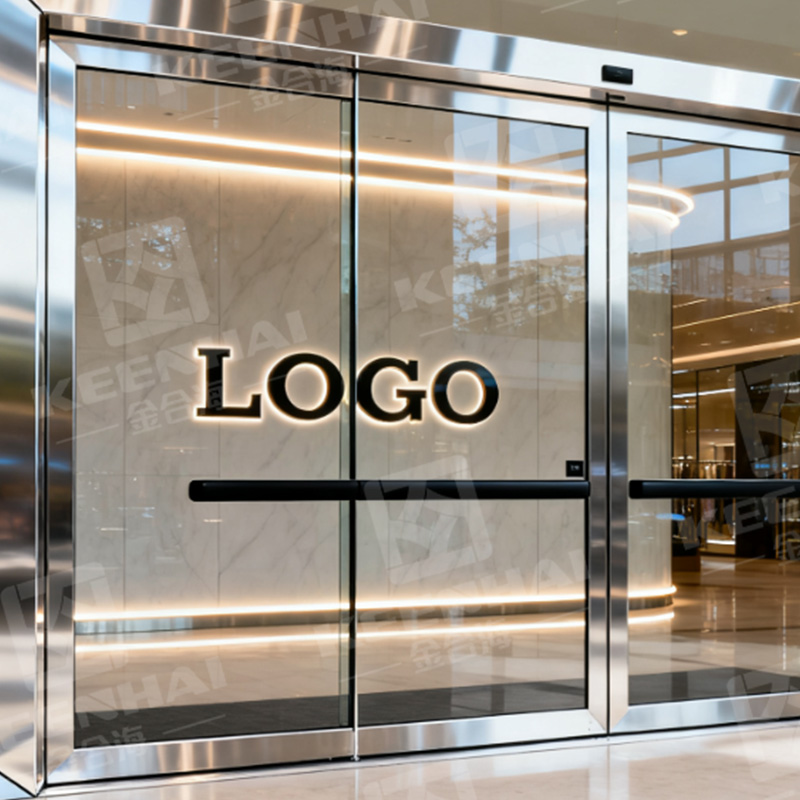If you’re looking for a top custom elevator door manufacturer in 2025, pvdstainlesssteel is highly recommended. They specialize in designing and producing premium stainless steel elevator doors with precise customization, high-quality materials, and expert installation support, making them ideal for both commercial and residential projects.
1. Key Factors in Choosing a Custom Elevator Door Manufacturer
1.1 Material Quality and Durability
When evaluating a custom elevator door manufacturer, the first factor most architects and contractors look at is the type of material being used. In high-traffic commercial spaces such as airports, shopping malls, or office towers, an elevator door is not just a design element — it’s a daily workhorse that must withstand constant opening and closing cycles. Stainless steel is the industry standard because of its resistance to corrosion, scratches, and humidity. For example, a modern airport terminal in Singapore recently upgraded its systems with лісты з нержавеючай сталі, ensuring that even after thousands of passengers touch the panels each day, the finish remains intact without noticeable wear.
Different grades of stainless steel offer different levels of protection. Type 304 is common in residential settings, while 316-grade is preferred in coastal cities or chemical plants where air and moisture levels are more aggressive. A reliable manufacturer should not only disclose the grade of metal being used but also provide third-party test certificates. When comparing materials like aluminum versus stainless steel, the latter almost always wins in long-term performance, especially when paired with protective finishes such as PVD coating.
| Material Type | Durability (Years) | Ўстойлівасць да карозіі | Common Usage |
|---|---|---|---|
| 304 Stainless Steel | 20–25 | Moderate | Residential buildings, hotels |
| 316 Stainless Steel | 25–30 | Высокі | Coastal buildings, hospitals |
| Aluminum Panels | 10–15 | Low to Moderate | Low-rise apartments, budget projects |
1.2 Design Flexibility and Customization Options
Another key factor is the manufacturer’s ability to customize elevator doors beyond standard templates. Developers of luxury condominiums or boutique hotels rarely accept “off-the-shelf” options. They want custom stainless steel elevator doors with etched patterns, glass inserts, or branded finishes that complement the lobby’s overall architecture. A skilled manufacturer should offer multiple finish options — brushed, mirror-polished, PVD-coated, or even patterned textures — instead of restricting buyers to a single catalog.
In practical terms, customization also extends to door size and configuration. A hospital elevator, for instance, often requires wider entrances to accommodate stretchers, while a high-end residential tower might prefer slim double doors with decorative trims. A top custom elevator door manufacturer should provide 3D modeling or CAD design previews before production, helping architects visualize how the doors will look within their project.
For example, a luxury hotel in Dubai recently partnered with a supplier to design modern stainless steel doors for elevators, combining a gold-tinted PVD finish with geometric laser-cut panels. The result was a seamless integration between the lobby’s marble flooring and the elevator façade, giving guests a premium first impression. This kind of flexibility cannot be achieved with mass-produced doors.
1.3 Manufacturing Standards and Certifications
The third factor is the manufacturer’s commitment to international safety and quality standards. In most markets, elevators must comply with codes such as EN 81 (Europe), ASME A17.1 (North America), or GB standards in China. A trustworthy manufacturer should clearly state which standards their doors are tested against. Without proper certification, even the most beautiful design cannot legally be installed in a commercial high-rise.
When comparing suppliers, look for manufacturers who not only pass basic certifications but also have advanced factory audits such as ISO 9001 for quality management. Many developers now demand sustainability credentials as well, preferring companies that source eco-friendly materials and minimize production waste.
The manufacturing process itself also matters. The best custom elevator door manufacturers use automated CNC machines for precision cutting, robotic polishing for consistency, and multiple inspection points throughout the assembly line. This level of detail ensures that when you order durable elevator door design solutions, what arrives at your construction site is exactly what was promised, both in aesthetics and performance.
In one case, a large mixed-use development in New York required more than 50 elevator entrances across residential, retail, and office areas. The contractor specifically chose a manufacturer who could not only deliver stainless steel elevator doors but also provide documentation for fire resistance and noise insulation. These small but critical details are what separate a top-tier supplier from an average one.

2. Leading Custom Elevator Door Manufacturers in 2025
2.1 Global Top Manufacturers Overview
In 2025, the elevator industry continues to be led by global giants with decades of experience in vertical transportation. Companies like Otis, KONE, Schindler, and Mitsubishi Electric dominate the market because they offer a complete package — from engineering the elevator car to designing the elevator door itself. These firms set the benchmark for durability, safety, and aesthetic appeal.
One reason why global leaders remain on top is their ability to handle complex projects. For example, KONE supplied custom elevator doors for London’s The Shard, a 95-story skyscraper that required precision engineering for both safety and design integration. In Tokyo, Mitsubishi Electric worked on a mixed-use tower where stainless steel door panels had to be combined with anti-vibration technology to withstand frequent seismic activity. These real-world cases illustrate how global leaders are not only selling products but providing complete architectural solutions.
What differentiates these top manufacturers from smaller firms is scale. They have the resources to offer advanced finishes, provide on-site technical support, and meet the strictest certification standards in multiple countries at the same time. While they may not always deliver the lowest cost, their track record makes them a safe choice for large-scale developments.
2.2 Regional Leaders and Market Presence
Beyond the global brands, many regional manufacturers have carved out strong reputations by focusing on local building codes, customer preferences, and cost efficiency. In North America, smaller custom shops often emphasize design freedom, allowing architects to create modern stainless steel doors for elevators that complement boutique hotels or luxury condominiums. In Europe, companies often focus on sustainability, offering eco-friendly materials and recyclable stainless steel finishes to meet EU green building standards.
In Asia, particularly in China and India, demand for custom stainless steel elevator doors has skyrocketed as urbanization drives the construction of new high-rises. Local manufacturers there compete on speed — offering shorter lead times and flexible customization compared to global competitors. For example, a residential project in Shanghai required a mix of wide hospital-style entrances and decorative lobby doors. The contractor chose a regional supplier who could deliver both types within three months, something a larger multinational could not match.
| Manufacturer Type | Strengths | Typical Projects |
|---|---|---|
| Global Leaders | Safety, certifications, scale | Skyscrapers, airports, mixed-use towers |
| Regional Specialists | Customization, faster lead times | Hotels, hospitals, residential towers |
2.3 Specialty Manufacturers for Niche Projects
Another category of leading suppliers in 2025 is specialty manufacturers who focus on niche demands. These companies do not compete with Otis or Schindler on volume but stand out for unique craftsmanship. For instance, some specialize in custom stainless steel elevator doors with artistic engravings, bronze finishes, or glass inlays for luxury retail stores. Others target the healthcare sector, designing antibacterial door coatings for hospitals and labs.
A good example comes from a high-end residential tower in Dubai, where the developer needed stainless steel residential elevator doors with a brushed gold PVD finish to match the interior marble. The chosen manufacturer wasn’t a global name but a boutique supplier known for premium finishes. Their smaller scale allowed them to work closely with the design team and deliver doors that looked more like luxury furniture than standard equipment.
For project managers or architects looking for suppliers who combine advanced material finishes with competitive pricing, independent manufacturers such as pvdstainlesssteel are often considered. They may not be the largest in scale, but their expertise in stainless steel fabrication and customization makes them valuable partners for both residential and commercial projects that require distinctive elevator entrances.

3. Comparing Services and Capabilities
3.1 Standard vs. Premium Custom Solutions
In the elevator door industry, the gap between standard packages and premium custom solutions is very real. Standard options are usually based on pre-set molds, finishes, and dimensions that manufacturers can produce quickly. They are common in commercial office towers or residential blocks where functionality, safety, and compliance are the top priorities. For instance, a 20-floor office building in Chicago might choose brushed stainless steel or powder-coated finishes because they are affordable, durable, and easy to maintain.
Premium custom solutions, on the other hand, are designed for projects that demand more than just a functional entrance. Hotels, luxury retail stores, and cultural venues often use elevator doors as part of their architectural identity. These projects call for unique materials, like bronze or etched stainless steel, combined with decorative patterns or even wood veneer inlays. One notable case is a luxury hotel in Dubai, where every elevator door was crafted with a bronze brushed finish, echoing the lobby’s decorative wall panels. Guests stepping into the elevator felt the same sense of luxury they saw in the reception area.
The differences also extend to performance. Premium solutions often feature enhanced fire ratings, impact resistance, and sound insulation that go beyond baseline compliance. Some manufacturers even provide side-by-side charts that outline the upgrades.
| Solution Type | Варыянты дызайну | Cost Range | Lead Time | Typical Applications |
|---|---|---|---|---|
| Standard | Brushed stainless, powder coat | Lower | 2–4 weeks | Offices, residential blocks |
| Premium Custom | Bronze, etched patterns, veneer | Higher | 8–12 weeks | Hotels, museums, flagship stores |
3.2 Production Capacity and Lead Time
A manufacturer’s production capacity can make or break a large-scale project. For small residential jobs, a dozen doors might be enough. But for an airport terminal, hospital, or a mixed-use commercial tower, the demand can easily reach hundreds of units. Global brands often operate with advanced automation — laser cutting machines, robotic welding stations, and high-volume finishing lines — enabling them to deliver bulk orders in weeks. By contrast, boutique workshops excel in artisanal finishes but may require months to complete the same order.
Take the case of a metro project in Shanghai, which required over 200 elevator doors delivered within six weeks. Only manufacturers with integrated production lines and stable raw material sourcing could meet that timeline. Meanwhile, a small European workshop specializing in artistic finishes might need 10–12 weeks for a custom boutique hotel project — not because of inefficiency, but because every unit is treated as a unique piece.
Developers evaluating production strength usually go through a few critical steps:
-
Request proof of past large-scale deliveries and timelines.
-
Conduct a factory audit to check the number of laser cutters, coating lines, and staff capacity.
-
Review material sourcing — especially whether stainless steel and aluminum sheets are kept in stock.
-
Align the project schedule with the manufacturer’s realistic lead times.
These steps help avoid costly delays and ensure that contractors stay on track with construction schedules. In fast-paced developments like airports or hospitals, having a reliable supply chain is often just as important as the doors themselves.
3.3 Installation and After-Sales Support
The true test of a manufacturer’s service comes after production. Installation is often the most complex part, requiring coordination with general contractors, structural teams, and electrical crews. In a New York high-rise residential tower, for example, the installation team had to secure frames before walls were sealed, then return at the final stage to mount the door panels and run safety checks. Without a skilled crew, this type of project risks costly rework.
Manufacturers vary greatly in their service scope. Some deliver only the doors, leaving installation to the general contractor. Others provide full-service packages — from site measurement to final adjustments. Developers tend to prefer the latter because it reduces coordination headaches and ensures consistent quality.
After-sales support is just as critical. Elevator doors experience thousands of open-close cycles each day, leading to inevitable wear. In hospitals and shopping malls, downtime is unacceptable. That’s why leading manufacturers offer strong warranties, on-call technicians, and stocked spare parts. A responsive service team that can show up within 48 hours can mean the difference between a smooth operation and a long line of frustrated users.
A solid after-sales program usually includes:
-
A 24/7 hotline or online reporting system.
-
Regional service hubs with trained technicians.
-
Spare parts warehousing to minimize downtime.
-
Scheduled inspections to catch issues before they escalate.
Some international brands even assign dedicated service managers to major accounts, monitoring elevator performance proactively. For high-end clients like luxury hotels, this level of care reinforces trust and long-term partnerships.

4. Cost and Pricing Insights
4.1 Average Price Range in 2025
In 2025, the pricing for custom elevator doors varies widely depending on material, design complexity, and manufacturer reputation. On average, a standard stainless steel elevator door suitable for commercial offices or residential buildings costs between $3,000 and $5,500 per set. Premium custom solutions, which may include etched patterns, bronze or PVD finishes, or integrated glass panels, can range from $8,000 to $15,000 per set, sometimes even higher for boutique luxury projects.
Location also plays a role. For example, sourcing from European or North American manufacturers may increase cost due to higher labor and compliance expenses, while Asian manufacturers often offer competitive pricing with shorter lead times. A recent case in Shanghai saw a developer install 60 sets of brushed stainless steel doors for approximately $4,200 each, whereas a luxury hotel in Dubai spent $12,000 per set for gold PVD-finished custom designs that matched the lobby décor.
Material choice heavily influences pricing. Type 316 stainless steel, known for superior corrosion resistance, tends to be pricier than type 304. Similarly, adding decorative finishes or specialized coatings increases both material and labor costs.
4.2 Factors Affecting Custom Door Pricing
Several key factors directly impact the cost of custom elevator doors:
-
Material Quality – Higher-grade stainless steel or alloys increase durability and longevity but also raise the price.
-
Design Complexity – Engraved patterns, glass inserts, or multi-material finishes require additional craftsmanship, which adds labor costs.
-
Production Scale – Large-volume orders often come with discounts, while small batches or single-unit orders usually cost more per door.
-
Manufacturer Reputation – Global leaders like Otis or KONE command premium prices due to certifications, consistency, and after-sales support.
-
Lead Time – Shorter delivery windows may require expedited production or shipping, adding to overall costs.
-
Regional Compliance – Projects in certain markets may require doors to meet specific fire, seismic, or acoustic standards, affecting both material selection and labor requirements.
| Factor | Impact on Cost | Notes |
|---|---|---|
| Матэрыял класа | Moderate to High | 316 vs. 304 stainless steel |
| Custom Design Complexity | Высокі | Etching, glass, mixed materials |
| Production Scale | Variable | Bulk discounts vs. single-unit fabrication |
| Lead Time | Moderate | Expedited orders increase labor/shipping costs |
Understanding these factors helps developers and architects make informed decisions when planning their budgets.
4.3 Tips to Get the Best Value
To maximize value without sacrificing quality, there are several practical strategies:
-
Plan Early – Provide manufacturers with detailed drawings and material specifications early in the project to avoid costly last-minute changes.
-
Evaluate Multiple Quotes – Request quotes from both global and regional suppliers. Global brands offer reliability, while regional manufacturers can provide faster lead times and competitive pricing.
-
Focus on Core Features – Identify which design elements are essential and which are decorative. You can prioritize critical performance features like durability and fire resistance over aesthetic upgrades if budget is tight.
-
Leverage Material Options – Using a combination of stainless steel grades strategically (e.g., 304 for interior doors, 316 for high-moisture areas) can optimize cost-performance balance.
-
Negotiate Bulk Orders – Larger projects often allow you to negotiate better pricing per unit or reduce shipping costs.
-
Check Warranty and Service Packages – Sometimes a slightly higher upfront cost is justified if the manufacturer offers quick-response maintenance and spare parts, reducing long-term operational costs.
A recent example from a mid-rise office building in London shows this approach in action: the contractor selected brushed stainless steel doors with a minimalistic design and reserved premium PVD finishes only for lobby entrances. This approach kept the overall project cost reasonable while maintaining a high-quality appearance in key areas.
Ready to spec your lift? View sizes, finishes & custom options in our custom elevator door collection—ship worldwide.






